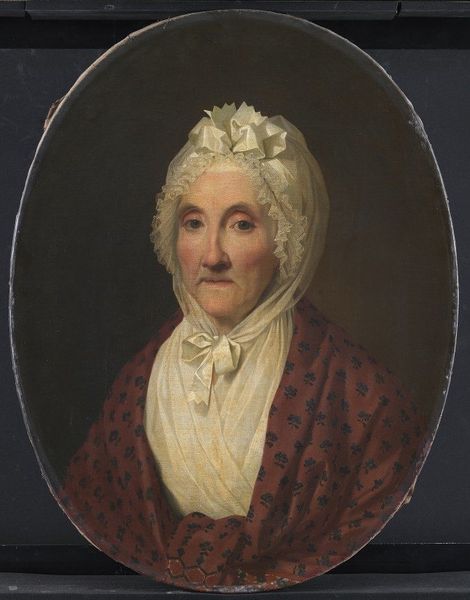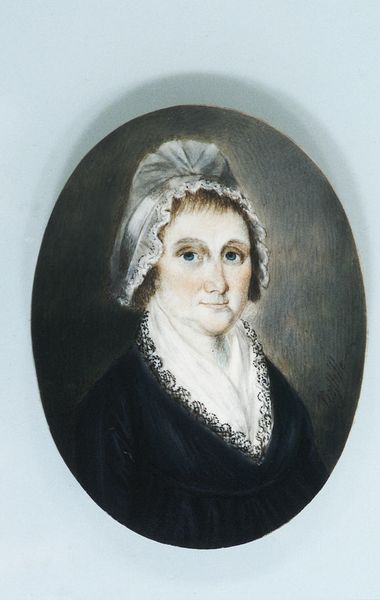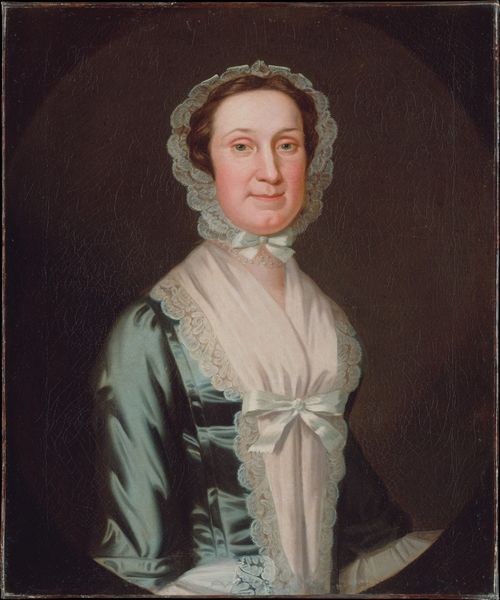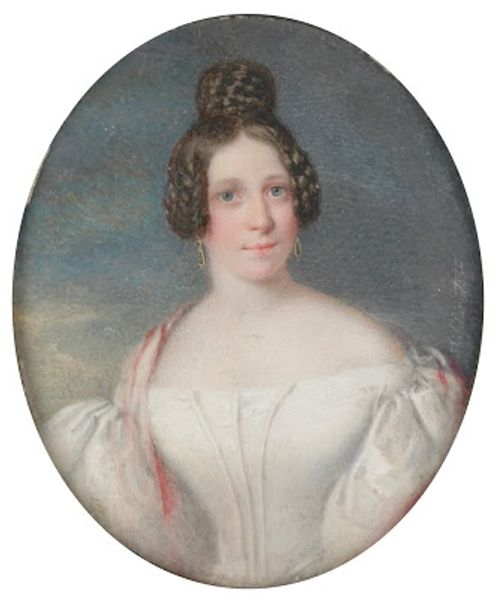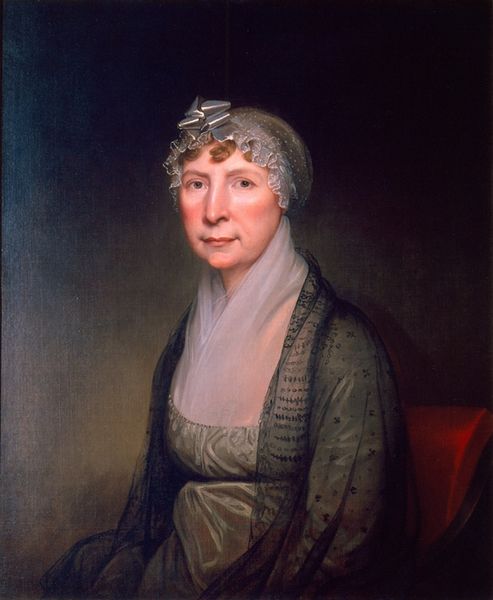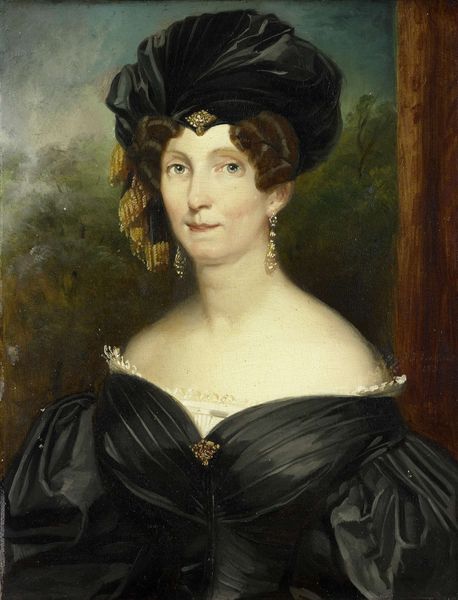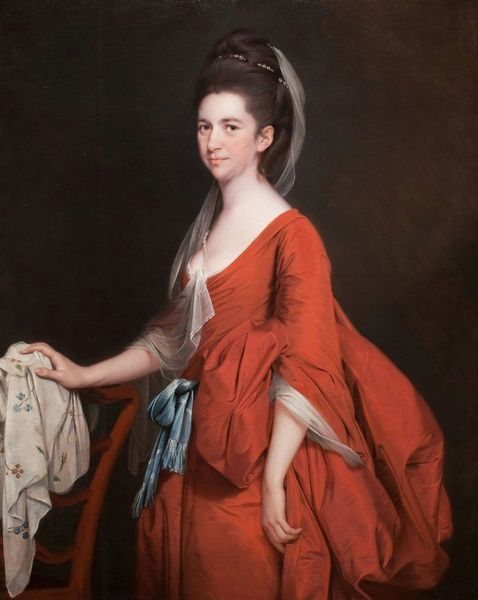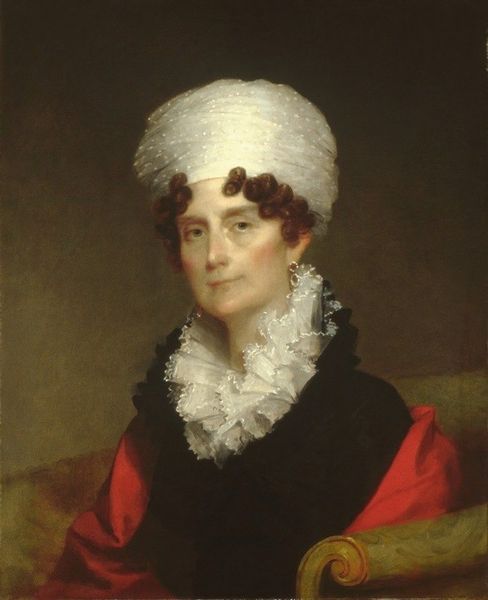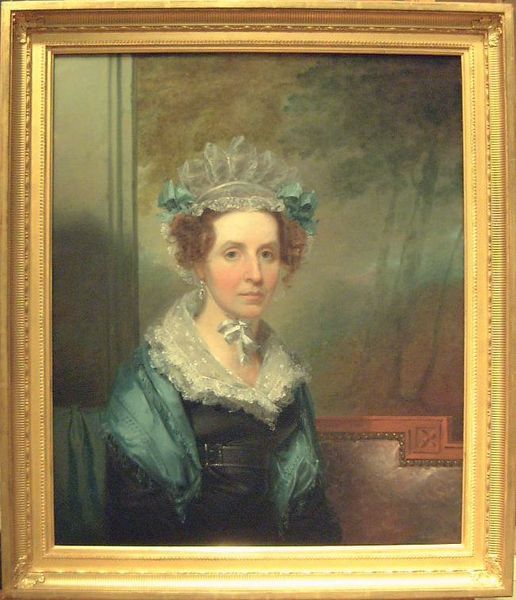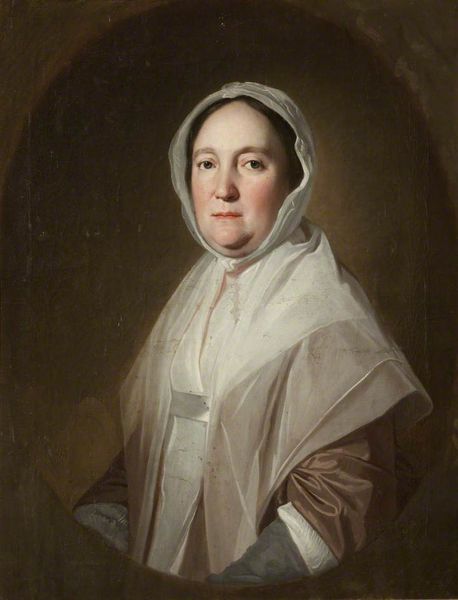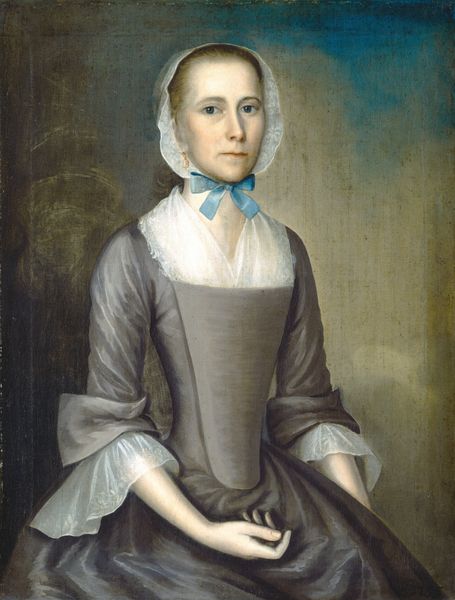
The Right Honourable Selina, Countess of Huntingdon (1707–1791), Foundress and Benefactress
0:00
0:00
oil-paint
#
portrait
#
oil-paint
#
romanticism
Copyright: Public domain
Editor: Here we have a portrait of "The Right Honourable Selina, Countess of Huntingdon," painted in oils by John Russell. She looks like a serious woman, gazing thoughtfully, perhaps after finishing the book that’s resting near her elbow. What can you tell me about her? Curator: What I see is a portrait of a powerful woman, presented within the aesthetic constraints of her time, but whose agency manifested through religious reform and social impact. Selina Hastings wasn’t just a Countess; she used her wealth and position to become a major figure in the 18th-century evangelical movement. How do you see the tension between her aristocratic status and her religious conviction expressed in the portrait? Editor: That's interesting. I see the aristocratic part in her fine clothing and refined pose, but what clues point toward her religious convictions? Curator: Look closely. There's a deliberate plainness to her dress, a stark contrast to the extravagant fashions of the aristocracy. The muted color palette and the simple bonnet, even the book itself, signal piety and a turn away from worldly vanity. This 'visual rhetoric' of humility was a conscious choice, used to amplify the Countess's moral authority at a time when aristocratic women had limited agency. The book suggests learning but might be also the Bible. This wasn't just about faith; it was about using faith as a lever for social change. What message do you think a contemporary audience would have received? Editor: So, the painting is not just a portrait, but a carefully constructed message about her identity and purpose. Fascinating. Curator: Exactly! And recognizing that helps us unpack not only her individual story, but also the broader history of women, religion, and power. Editor: I'll definitely look at portraits differently now, thinking about the narratives they are crafting. Thanks!
Comments
No comments
Be the first to comment and join the conversation on the ultimate creative platform.
